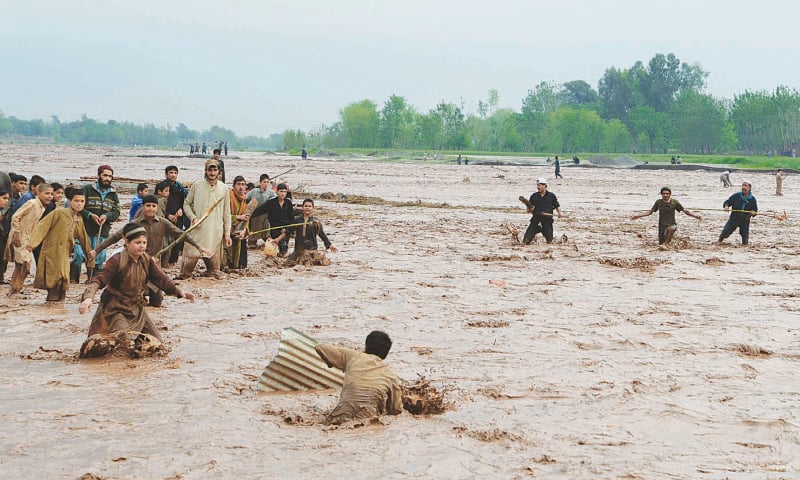
Western fast fashion buyers had a profitable run with Pakistan as a readymade garment manufacturing hub for exports. A buoyant industry, availability of locally grown cotton and of course cheap labour was just the successful mix that Pakistan offered. And for Pakistani garment exporters and their worldwide buyers it was a win-win situation. On the domestic front, social media drove the requirement for fast and disposable fashion to heights like never before and local producers for domestic consumption and the fashion retail sector were in a happy place.
However, the country started paying the price as the production of fast fashion devoured its already scarce water resources a result of non-structured federal plan despite an abundance of rivers. Today, vast tracks of water bodies that could have been a useful source of drinking water for cities lie polluted with chemicals that are the effluence from the nation’s textile industry as well as synthetic microfibers that are a common waste from polyester, the cheap synthetic fabric that is a staple in fast fashion.
Pakistan’s textiles exports downward trend
Meanwhile Pakistan’s textile exports have been falling constantly. There are varied reasons some very Pakistan-specific negatively affecting exports competitiveness and these include: a massive rise in energy prices, growing working capital cost and supply-side bottlenecks. Buyers are also reluctant to offer business to Pakistan due to the country’s woefully fluid macroeconomic position.
As per central banks’ payment data based on export receipts in FY22, compared to Pakistan, Bangladesh’s textile exports (net of textile imports) were not much higher with net textile exports at $15.7 billion and for Pakistan the number was $12.7 billion. Similarly, textile imports to exports ratio was 39 per cent in Bangladesh versus 31 per cent in Pakistan in FY22. Thus, Pakistan has a higher conversion of imports to exports in value terms.
However, in gross valuation, Bangladesh’s textile exports were higher at $32.7 billion compared to Pakistan’s $18.3 billion. As per Bangladesh’s Export Promotion Bureau’s statistics, textile exports were $46.7 billion compared to $19.3 billion for Pakistan Bureau of Statistics. Moreover, in FY23 - especially in the last six months Pakistan’s textile exports are down 15 per cent to $16.5 billion – the deceleration is higher lately.
Sustainability issues plague textile sector
According to a report by the Pakistan Institute of Development Economics (PIDE) this year, more than 80 per cent of Pakistanis face “severe water scarcity” for at least one month each year. The report stated Pakistan ranks 14 out of 17 countries designated as “extremely high water-risk” nations. Faisalabad, acknowledged as the nation’s fast-fashion hub with large number of factories illustrates the life threat fast fashion can pose on the city’s residence. Untreated wastewater from Faisalabad's hundreds of factories is polluting the water that is piped directly into people's homes. The result is a high mortality rate in children and a health crisis that is only getting worse as the city expands its garment manufacturing capabilities.
The Pakistan Accord of 2022, a local version of the International Safety Accord, formerly known as the Bangladesh Accord, unfortunately has not engaged in the drinking water crisis caused by the toxic effluence from garment manufacturing countries like in Faisalabad.
Government intervention
For the last few years, Pakistani politics has set in motion a chain of events that escalated to absolute chaos and governments in resident were busy staving off being kicked out or busy trying to garner financial resources from keeping it going into an economic bankruptcy. This scenario left no breathing space for the government to look into analyzing the way fast fashion was contributing to polluting water, air, chocking landfills with waste and exploiting basic rights of the sector’s workers. Not surprisingly, very little by the way of researched data is available from governmental sources for experts to be able to weigh in on the percentage fast fashion is contributing to environmental pollution in Pakistan and bring the sector to task.
Embracing sustainability way forward
For a start, the country’s manufacturers who target the export sector don’t have a choice, particularly if they are engaged with the EU – since 75.2 per cent of all Pakistani exports to the EU are textiles and apparel, the number is significant and getting disqualified as EU vendors will be akin to a death blow. According to All Pakistan Textile Mills Association, its private members have taken the lead towards establishing their sector as Net Zero in Pakistan. The alliance is on its way of setting out the plan and structure by which Pakistan’s private sector may hasten its transition to sustainability and accomplish this net zero objective.












